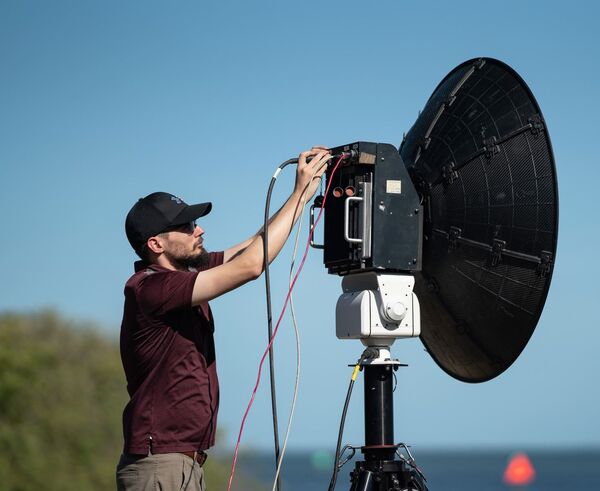
A Comtech COMET troposcatter system set up for a BLOS network demonstration at SOF Week 2023 in Tampa, Florida. (Comtech)
Industry officials are looking to leverage Cold War-era tactical communications technologies as a potential enabler for the US Department of Defense's (DoD's) Combined Joint All-Domain Command and Control (CJADC2) capability.
Programme officials with satellite communications (satcom) development company Comtech in May conducted a multivendor demonstration that blended satcom, tropospheric scatter links, and local area networks (LANs) to blend “multiple connectivity types, multiple connectivity bubbles” as a means to stand up a viable, beyond-the-line-of-sight (BLOS) combat communications network for a satcom-denied environment, said Dan Gizinski, chief strategy officer for defence at Comtech.
The demonstration – carried out during the inaugural SOF Week 2023 conference in Tampa, Florida – consisted of a satcom link via commercial provider Kymeta, combined with two troposcatter links connecting a small unit element with a forward-deployed command post 13 miles away.
The connectivity bridge established as part of the demonstration provided “internet connectivity and data rates that … we expect to be in the tens of megabits per second range but can support significantly increased throughput in the 100 megabits per second plus range,” Gizinski told Janes during a May interview.
Developed shortly after the Second World War, tropospheric scatter or troposcatter technology is a means of long-range communication consisting of the bouncing of microwave radio signals off the Earth's troposphere. Once the microwave passes through the troposphere, the signals ‘scatter' and descend across a wide area and are picked up by ground relay stations, oftentimes miles away from the initial transmission site.
Looking to read the full article?
Gain unlimited access to Janes news and more...







